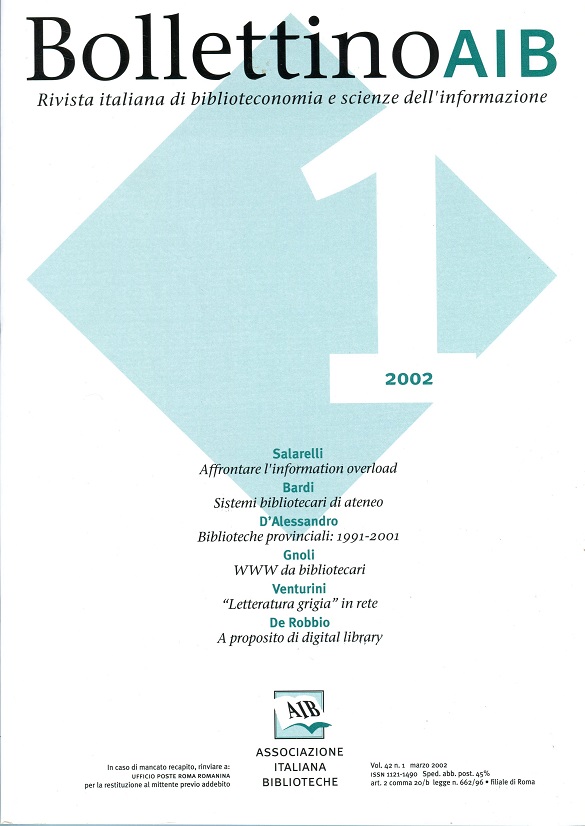WWW: librarian style
Main Article Content
Abstract
Telematic technology implies important new discoveries not only for the access and circulation of documents, but also for their organization: the contents of Web pages are expressed through marking languages, like html and xml, in which titles, texts, links, images, etc., are labelled with special markers; a structure so defined can therefore be reproduced in various ways, adapting its presentation to different reading tools, from the windows of normal screens to sound interfaces, braille, integrated with other equipment, etc. This necessity for flexibility must be borne in mind when creating the documents, avoiding filling them with presentation details that suffer from the habits connected with paper documents.The AIB-WEB site <http://www.aib.it> resolves to be, in this sense, not only a vehicle of information relative to the Association and the world of libraries, but an experiment of organization of the contents and method of work which really are “of librarians”, applying to the WWW techniques and concepts that are typical of the profession. If in fact the Network is often compared to a global library, then what could be more suitable than traditional library techniques for controlling access to its contents.The first premise for the efficiency of the global library, as is the case with every library, is its accessibility, both from a practical as well as a technical viewpoint: the availability of sophisticated software that diverges from the standards of the W3 Consortium, makes it very easy to risk transforming the special effects destined to attract attention into objective hindrances to the transmission of the contents. The reference has a network equivalent in the various tools that direct the reader during his navigation within a site. The choice of hypertext links with external sites, in the same way as the traditional policy of acquisitions, should avail of conscious and coherent planning and selection criteria, and of adequate maintenance and update resources. The indexing of the Web pages, by the authors themselves, presupposes a proper use of the title markers and of the metadata that can be combined with the pages. The choice of URL addresses shows strong similarities with the placing of the books on the shelves, being at once both arbitrary but also exploitable for creating useful arrangements. Obsolete information and previous versions of the pages raise questions of conservation: their filing in local copies or even in the network require prudent management of the operations. Promotion of the available information resources can take place through the most varied channels, among which those of the “just in case” type are best suited to the logic of the Web. Finally, the organization of the work and of the information flows from the various subjects, including through the integration of the Web with electronic mail, is crucial for avoiding ambiguity and for making the information service truly effective.
Article Details
Section
Articles

This work is licensed under a Creative Commons Attribution-ShareAlike 4.0 International License.
